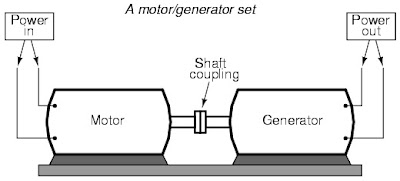WEEK 11
Title: The purpose of using alternator
Objectives: To clarify the importance of the alternator for this project.
To differentiate the alternator and the generator operation
Alternators
Alternators can produce much higher output than generators;
current designs on produce over 160 amps. The brushes only carry current to
power the rotor (about 7 amps, maximum), so they last far longer than generator
brushes do. There are some disadvantages, though. The Lundell alternator
requires two watts of power to spin for every one watt that it produces, making
it relatively inefficient.
Generators
One of the advantages of generators was very
clean electrical output, since they produced pure DC. However, all the current
had to travel through the brushes and brush leads; this produced a lot of heat,
and when the brushes would pass over the bars in the commutator, small
electrical arcs would be produced, which shortened the life of the brush. To
counter this, the brushes were made very hard, which wore out the commutator
faster. Because all current traveled through the brushes, most generators had a
maximum output of 50 amps.
Generators also needed a cut-out relay to disengage power to
the generator when not charging. This was done so that the generator would not
pick up power and turn into a motor, burning out when not being spun by the
engine.
















